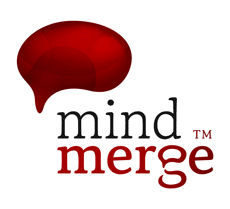Advanced Cash Flow & Working Capital Management
What you'll learn
Understand the fundamentals of effective management of cash flow, including the optimization of the level of working capital.
Develop practical experience of how to manage cash flow and optimize working capital to facilitate such delivery in real-life business situations.
Increase personal financial skill levels.
Develop confidence through understanding the major drivers of successful financial performance.
Learn many technical skills, all of which lead to the ability to calculate the required figures and implement them into value-adding business decisions.
Understand balance sheets and profit-and-loss statements.
Understand the importance of cash as the lifeblood of a business.
Understand how to control and manage the cash flow of a business.
Forecast cash flows and draft a cash budget.
Evaluate projects based on their expected cash flows.
Incorporate risk into financial decisions.
Budget Preparation
What you'll learn
Develop the skills to Plan Budgets within a sound Strategic Plan
Appropriate Forecasting Techniques including Time Series Models
Understand the Exponential Smoothing, Regression and Correlation Analysis and Costing Methods such as Activity Based Costing
Develop the skills to effectively implement Budgets
Become aware of the problems/limitations of budgets and the conditions required for their success
Integrate the budgeting process with the development of the company’s long-term strategic vision
Fast Closing Month-End & Year-End Accounts
What you'll learn
Understand the importance of the fast close process on financial and operational decision-making within an organization
Examine fast close processes, strategies, and best practices as well as consideration of organizational documentation policies and procedures
Understand the importance of departmental requirements for financial reporting as well as the need for on-going improvements to the closing process
Provide faster and more accurate data for monthly and year-end account closings to enhance communication with internal and external financial statement users
Utilize assessment tools to pinpoint the disconnect between finance and internal users
Consider organizational policies, procedures, and documentation related to a fast close
Consider the departmental requirements for financial reporting
List the steps needed to carry on process improvements in finance and identify the need for closing process redesign
Trade Finance, Letters of Credit and Bank Guarantees
What you'll learn
Understand trade finance fundamentals and best practices
Explore banking facilities related to trade finance
Better negotiate contracts commercial terms
Understand and utilize different types of available letters of credit
Understand and utilize different types of available letters of bank guarantee
Winning Financial Strategies
What you'll learn
Actively partake in strategic analysis and formulation
Develop vital measures of financial performance and strength
Design funding and capital structure strategies
Build financial models to manage cash flow, risk, and investment decisions
Advice on capital investment decision-making
Provide insights into long-term business growth strategies
Effective Budgeting, Planning & Control
What you'll learn
Integrating the planning process with the budgeting cycle
Forecasting using various models including Time Series Models, Exponential
Smoothing, Regression and Correlation Analysis using Excel and leading software/models
Sales Budgets
Production Budgets
Cash Budgets
Capital Budgets
Budget Management including “What If, Sensitivity Analysis
Budget Control including Variance Analysis to assess the impact on major factors of production and consumption
Advanced Financial Statements Analysis & Evaluation
What you'll learn
Understanding financial statements
Reading annual reports
Processing financial data
Financial analysis
Risk management
Analyzing financial reporting standards used
Corporate Finance Workshop
What you'll learn
Understanding operating, investing and financing decisions
Working capital management
Capital investments decision making
Calculating cost of capital
Setting dividend policy
Financial forecasting
Equity valuation
Warehouse Safety Program (10-hour General Industry)
What you'll learn
Hazard Communication: Basic
Emergency Action and Fire Prevention Plans
Personal Protective Equipment: Basic
Walking-Working Surfaces and Fall Protection
Electrical Safety for Employees: Basic
Introduction to OSHA
Materials Handling Safety
Controlling Hazardous Energy (Lockout/Tagout)
10-hour Employee Occupational Safety and Health Program
What you'll learn
Introduction to Occupational Safety & Health
Essentials of Occupational Safety & Health
Hazard Recognition and Control
Emergency Preparedness and Response
Occupational Safety Culture
Bloodborne Pathogens in the Workplace
IADC – WORK AT HEIGHT, FALL PROTECTION, & RESCUE TRAINING COURSE
What you'll learn
Describe 5 hazards associated with working at height.
Describe 3 safe working procedures while working at height.
Describe the difference between fall prevention, fall restraint, and fall arrest.
Label at least 80% of fall arrest and fall protection system equipment.
Demonstrate how to inspect and wear personal fall arrest/fall protection system equipment.
Describe 4 hazards specific to ladder safety and provide a relevant control method for each.
Describe 2 types of rescue procedures to be used during rescue at height operations and identify the equipment used for each procedure.
Demonstrate their ability to conduct a job safety analysis (JSA) for a work at height scenario.
Demonstrate competency in using fall arrest/fall protection equipment.
















